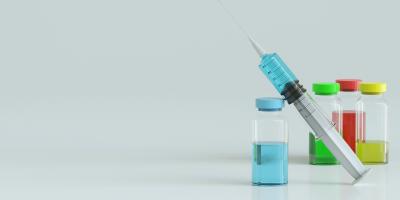Giving birth in a vertical position, in water, on a birthwheel, and using laughing gas – the techniques that facilitate natural childbirth and reduce pain are becoming more and more popular in Polish hospitals.
Prof. Tadeusz Laudański, Head of the Department of Perinatology, Medical University of Lodz, points out that many techniques considered innovative such as giving birth in water or squatting are, in fact, natural techniques known in primitive cultures. “It is necessary to take advantage of gravity while giving birth and not to act against it," said Prof. Laudański who in 1996 was the first to deliver a baby in water in Poland.
Such delivery is beneficial both for the mother and for the child. The child is born into a similar environment in which it lived in the uterus, which reduces postnatal shock, and warm water soothes pain in the woman in labour.
Anna Piotrowicz, a midwife with twelve years’ experience from the hospital in Wołomin, agrees with the opinion. "Entering water in the first phase is full of advantages and can be regarded as an alternative to epidural anaesthesia because it makes it easier for a woman to bear labour pains." – told Piotrowicz in an interview with the e-Zdrowie portal.
A birthwheel, a gym ball, and ladders
The natural methods of alleviating labour pains are possible not only in water. These can also be achieved by using birth wheels and beds available in some hospitals.
The wheel consists of metal rims with a hammock hanged on them. The structure enables the woman to assume any position during childbirth thanks to which the first stage of childbirth is less strenuous.
The birth bed has similar functions.
Both facilities are comfortable not only for the woman giving birth but also for the midwife and the doctor which gain better access to the perineum when a woman is in a vertical position.
If there is no technologically advanced equipment available in the labour and delivery room, women can assume comfortable positions, using, for instance a ball or ladders.
"Women must definitely give birth in an active way – walking, squatting, or rocking on a ball," Piotrowicz stressed.
What about anaesthesia?
Modern childbirth techniques also include unconventional ways to relieve the pain. Apart from relaxation techniques (childbirth with lighted candles, mood music, massage, conscious breathing, aromatherapy) and anaesthesia (epidural or opioid-based analgesics), the so-called laughing gas can also be used on delivery rooms.
It is a type of inhalation anaesthesia, where a mixture of oxygen and nitrous oxide is used. The gas does not eliminate the labour pain, but it subjectively makes it less severe. This medication works immediately and more mildly than pharmacological anaesthesia. The midwife stresses that the presence of a close relative is an irreplaceable part in pain management. “The presence of a relative has become a common practice in Polish hospitals these days. Undoubtedly, it appears to be something worth taking advantage of. It has been scientifically proven that labour supported by a relative takes less time".
Based on her professional experience, it can be stated that women who are preparing for birth and visit a hospital or a school of birth for the first time – first ask about the possibility of using an epidural anaesthetic. “As they learn about alternative methods of pain management, the availability of an epidural anaesthetic is not so important to the women anymore," Piotrowicz said.









Comments (0)